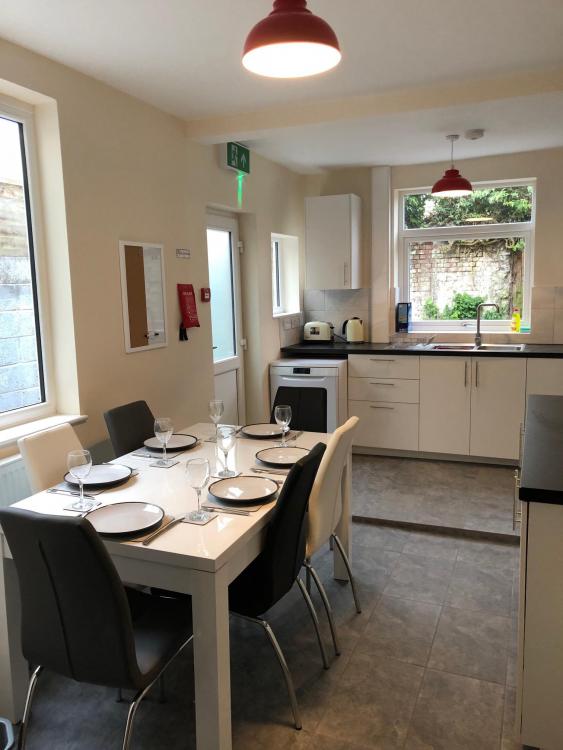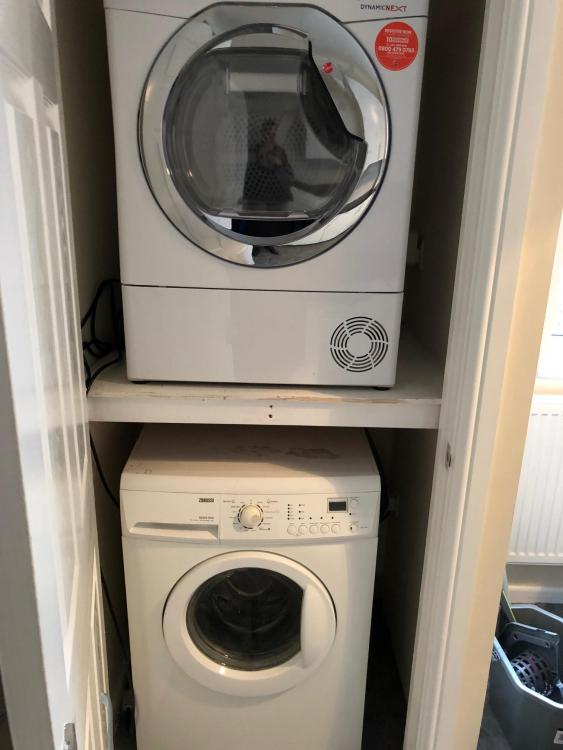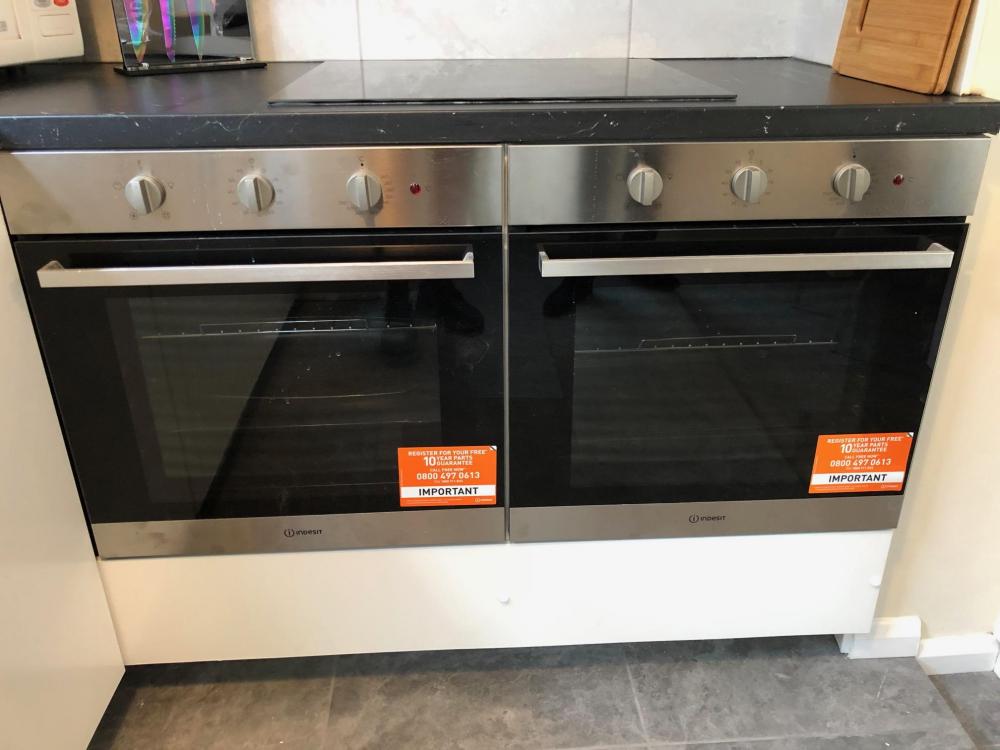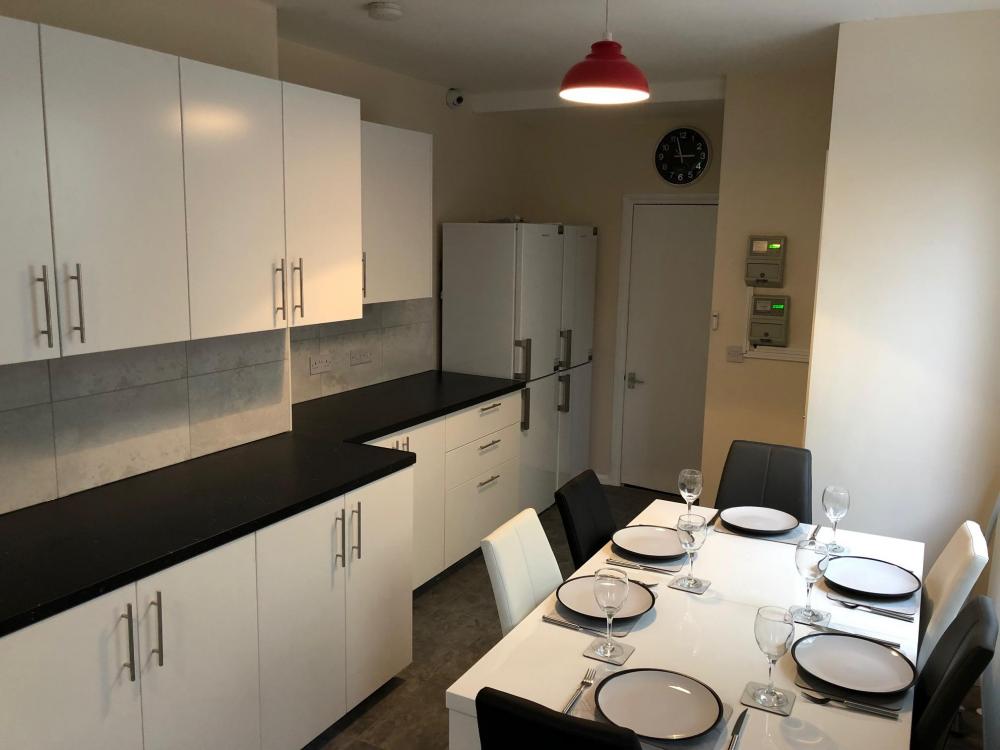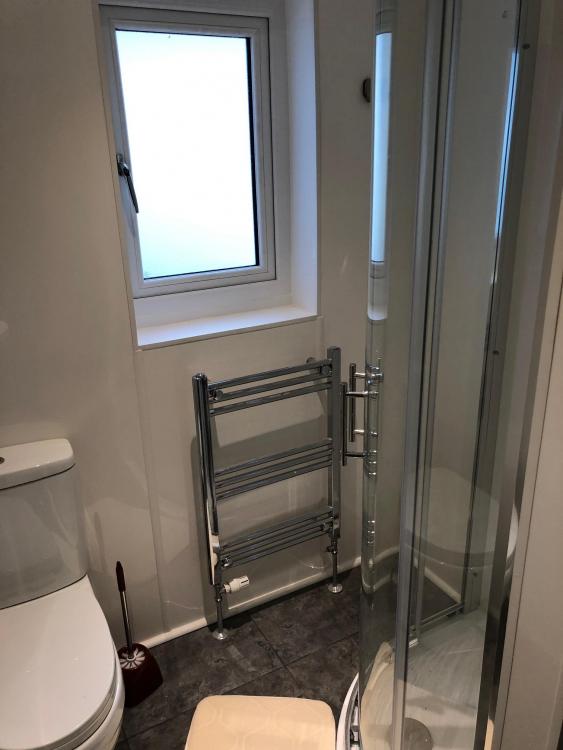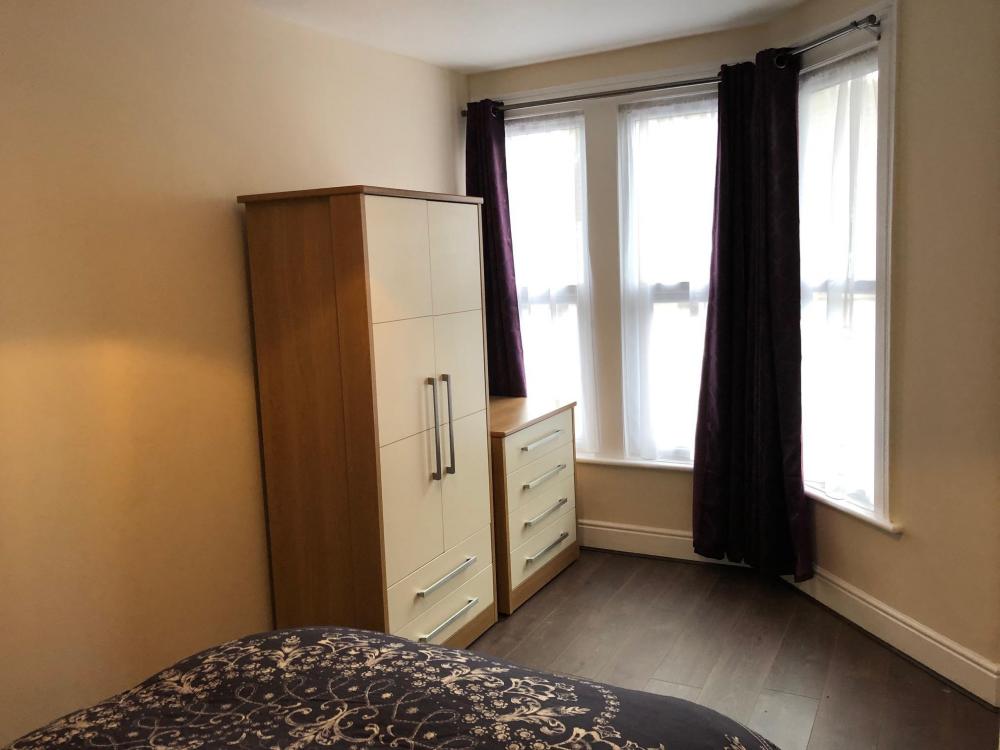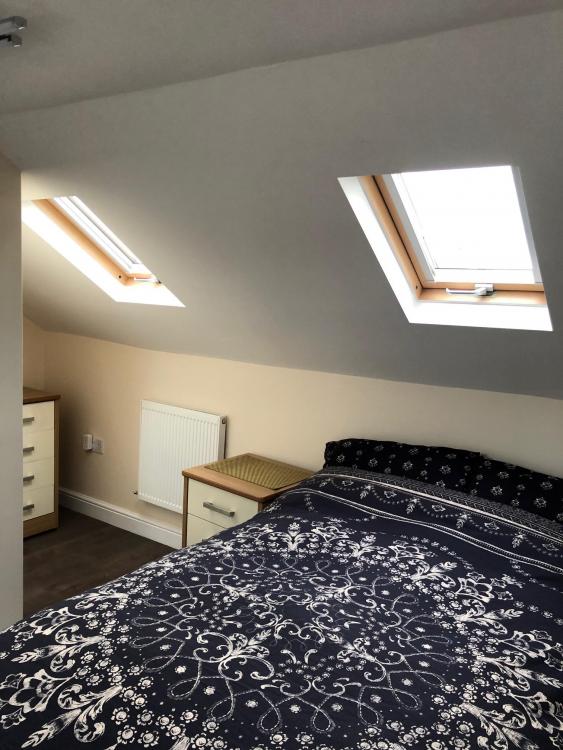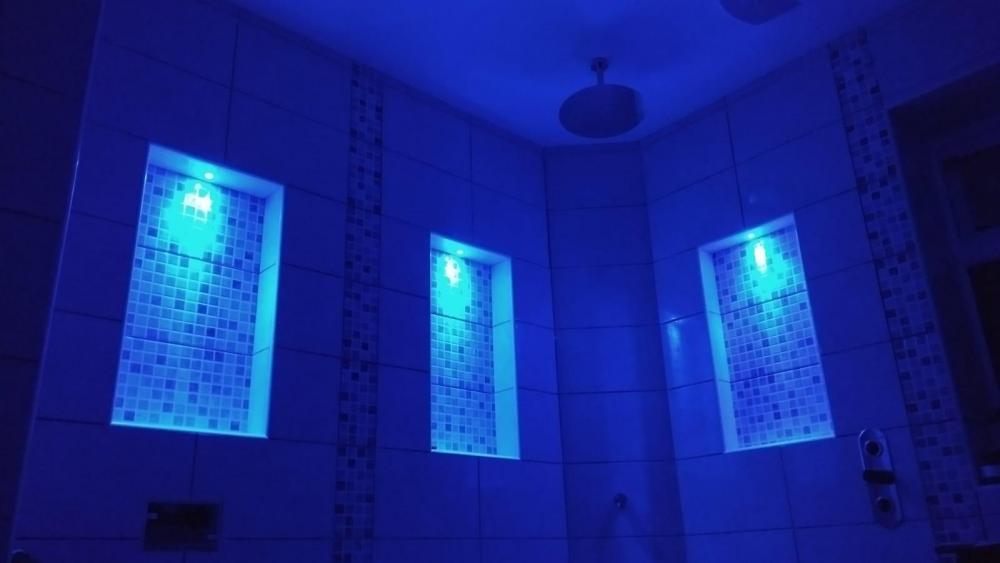Leaderboard
Popular Content
Showing content with the highest reputation on 01/12/19 in all areas
-
The driveway has been laid and I think they have done a fantastic job. I have also finally got around to putting up a postbox and a doorbell. I got the doorbell from a company called Metzler Trade that sells on Amazon and its own website, a lovely quality item. It always disappoints me when people have little plastic doorbells. I forgot to include power for the bell so put a Grothe wireless bell behind it. All the gutters, soffits and fascias are finished. We also framed around the garage doors in matching aluminium. This is an area that is usually just painted wood and starts to blow after a while. The builder just has a smallish list of things to finish off. Finally we can get the walls and doors washed down, I didn't see any point before the drive was down. The landscapers want to start in a couple of weeks now also which is good.5 points
-
Well that’s 5 weeks now since we made our move into the house, our joiner worked away until December 21st then cleared all his stuff away to allow us to get ready for Christmas. We have a fully functional kitchen, lounge, dining room, bedroom, ensuite and bathroom and it has been pure bliss living in a house again! The glass for the staircase should be this coming week after which we will get the upstairs organised and maybe buy some new furniture ? the chap from the heating company came down eventually and sorted things out for us , turned out to be something minor but with nothing labelled it was difficult to get your head round so now we have a better understanding of it all. waiting for the better weather now to get a ramp, steps and decking done and the garden and drive sorted out but all in all I am very happy with my new home and haven’t yet found anything that I wish we had done differently, although this could come! They do say you’ get your third one right ?3 points
-
3 points
-
3 points
-
You people buy the stuff, and I fit it to the best standard that “it” can achieve. Look at at that bird getting up close to BoJo. “Beauty is in the eye of the beholder” Tidy, that’s your gin and @newhome‘s coffee. I’m going for a hat trick. ??3 points
-
First off - an apology. I've been lax in getting this next instalment posted. Several days away over the holiday season led to several days more trying to sort out family issues, which have since spiralled out of all proportion. I think I have now put the genie back in the bottle, so on with the show. Where were we? Ah yes, we'd poured the basement walls. They'd gone a little wonky (because I was a numpty and failed to install adequate bracing on the outside of internal T-walls), but we had walls that we could build up from. Time for backfill and construction of the remaining foundations (our basement is only 60% of the width of the above-ground house). Before that, we needed to fit a drainage channel around the basement walls & slab. Here's the groundworkers putting the (terram-wrapped) french drain in around the slab/wall junction, which was then covered in 10mm pea gravel to a depth of 500mm, and then 40mm clean limestone: This actually led to one of the most enduring memories of the project to date. I was laying the drain outside the far corner of the basement (where the cave-in nearly smashed the wall apart). The groundworkers had decided that they wouldn't get in that part of the excavation (between the concrete walls and the bank) in case of further cave-ins, so myself and a couple of mates sorted out the drainage channel. Unfortunately, it had rained a lot over the weekend, and was muddy and slippy and wet... Standing on the edge of the slab was precarious to say the least, and I'm not the most svelte individual... Long story short, I fell into the mud. Which sounds funny, but at the time, it was rather terrifying, because of the depth of said mud, and how much effort it took to get me out of the mud. Don't believe me? Here's how deep it was: Took 2 people to lift me out of the mud, and I came out without one of my boots as well, which has never been seen since. I had to walk home, because I didn't have a change of clothes, and I had come to site in the Jag. So over an hour, with outside temps being about 3C, trudging home feeling very sorry for myself. At least my mate lent me a pair of boots! One detail I haven't mentioned prior... The basement walls are 10" thick concrete core, but the above-ground walls were designed to be 6.25" concrete core. The mathematically-astute among you will have already worked out that gives 3.75" (or a touch over 95mm in new money). This was intentional, because I figured I was a clever so-and-so, and could use that 95mm as a bearing surface for concrete floor beams. Genius, eh? Well, maybe. It did give us a nice bearing surface, and it did remove a potential cold join between pours at ground level, so big win there. However it then entailed removal of a large amount of EPS from the inside of the blocks so that the beams would slide along on this concrete (because a crane wouldn't get on site very easily, so we used manual labour to move the beams), so the labour aspect was considerable. It took better part of 2 days to remove the EPS (and resulted in about 3 builders bags worth of EPS fragments sitting in our basement), and another 2 days to set the beams in place and start laying the infill blocks. Here are the beams going on: And here are the floor blocks being laid: Here you can see the EPS having been removed en mass from where the beams had to slide. Don't worry - it's not a giant thermal bridge, because we put EPS back around the beams once they were in situ properly (albeit much later in this story) we have now put insulation above the floor beams for the UFH to sit on top of, and we will shortly be putting insulation under the floor beams in the basement ceilings too (cos we have a load left over) (The big hole is where the stairwell is going, in case you're wondering!) We backfilled at the same time as laying the floor beams. More precisely, because of a battle of wills between the engineer and the groundworkers, we backfilled to approx 50% of depth, then laid the beams (with the walls evenly loaded all round by the backfill to "prevent asymmetric destabilisation and collapse") and finally finished the backfill. 440 tonnes of backfill went in around the basement - that's a lot of stone! Next up was the remaining foundations. Building Control had specified a minimum depth for the mass-fill RC footings for the rest of the house, because of the massive lombardy poplar trees at the front of site. A nice big strip was dug out (2.5m deep at the front, and 1.5m deep at the back of the plot - furthest from the trees), and filled with concrete. The engineer had specified cages of 16mm rebar to make our ground beams that linked the mass-fill footings to the basement walls, with clay heave protection, so we dug out from the clay capping over the backfill, formed shutters with the heave protection, and dropped in our cages: Once the concrete had started to cure in earnest, we laid the first course of blocks on the new foundations, and linked into the basement wall blocks. The steel reinforcement is probably overkill, but better safe than sorry when your engineers starts saying "you don't want the two halves of the house to separate"... The blue pipes were my attempt to ventilate under the block & beam floor that we were going to lay over the new foundations. Turns out that Building Control didn't care a jot about that once they saw how much backfill stone we had placed - not sure why that would matter, but there you go! Concrete was poured in this course of blocks to stabilise everything, and get us ready to carry on with the build. Myself and a couple of mates laid the remaining floor beams in a weekend: That'll do for now - as my Mum used to say: "keep 'em wanting more!"2 points
-
2 points
-
2 points
-
That should come under work closely connected to the construction of the building in VAT Notice 708 so can be zero rated as long as planning permission is in place. If the builder provides equipment such as skips etc and it is all invoiced as part of the main work then that should also be zero rated. If it's on a separate invoice it can't be. When you say Heras fencing are you meaning that the ground worker will bring this in and remove it again when he has finished the groundworks as you will then need more for when the real construction starts presumably? https://www.gov.uk/government/publications/vat-notice-708-buildings-and-construction/vat-notice-708-buildings-and-construction2 points
-
2 points
-
2 points
-
Christ I bet he didn’t even have the slightest hint of bum fluff when you started that job! ?2 points
-
Do not know if this is useful but thought I would post for anyone thinking about doing a self build. Here is a break down of my fee's I have to pay before I start building. My help someone trying to estimate their costs. This is for a 4 bedroom house 280 m2 detached house The legal work was complex Fee Payable To Payable When Amount Local Authority Planning Fee East Ayshire Council Planning Submission £500.00 Architectual Plans ATW Planning Submission £2,375.00 Building Control Drawings ATW Building Warrant submitted £2,375.00 Egineering drawings ???? Building Warrant submitted £1,100.00 Building warrant East Ayshire Council Building Warrant submitted £2,228.40 Additional Security Fee BuildLoan At the start of the loan - non-refundable £1,120.00 Build Store Arrangement Fee BuildLoan Applied for mortgage - non-refundable £695.00 Completion Fee Newcastle Building Society Fee has been paid - non-refundable £995.00 Product Reservation Fee Newcastle Building Society Fee has been paid - non-refundable £199.00 Valuation Fee Newcastle Building Society Fee has been paid - non-refundable £340.00 Mortgage Discharge Fee Newcastle Building Society At the end of the Loan - non-refundable £125.00 Solicitors Fee Wallace Quinn At end of conveyancing £2,116.00 Structual Warranty Build Zone Through Out the build £3,940.00 Site Insurance Before Completion £342.12 Thanks1 point
-
1 point
-
Thanks all, top tips. I’ll be seeking a specialist quote for internal wall insulation before the purchase is complete, and definitely getting a specialist in to do it, I like the idea that it can be modelled rather than just sticking a finger in the air to figure out the dew point. If we were to do windows, underfloor and walls do you reckon it’d be in that order? I know the internal wall insulation is easily damaged by things penetrating the vapour layer, so I’d guess it wouldn’t be very clever to put in new windows afterwards?!1 point
-
Certainly did! ? We broke ground on 9th October 2017, and the basement was effectively complete structurally as of 22nd December 2017. That's about 11 weeks all told... We were told at the start by the groundworks team that it would take approximately 4 weeks, so quite a difference! Not even remotely. Because the banks were falling back into the hole, we ended up taking out 74*32 tonne wagons of spoil instead of the predicted 52 wagons. We were paying day rates to the groundworks crew, with a 7 week overrun. We had to sheet pile parts of the excavation for a number of weeks, and hire twice as many pumps as we predicted to keep the dig as dry as possible. We ended up spending 57k on groundworks, and had about 22k in the budget. Our contingency for the entire build was 25k (10%)... I will cover this in more detail in the next blog post, now that we are out of the ground ? Not long to wait, will try to get it done tomorrow! ?1 point
-
Guess @Onoff might have access to one on a weekend huh? Heat gun and a J Roller might be more his style!1 point
-
Me too! Those stick on solar things might work maybe? And I’m with you about falling down. You’d likely bounce at 20 but do real damage a ‘few’ ? years later. One reason why I would no longer ride horses ?...1 point
-
@AliG It's looking great, I like the combination of traditional and contemporary.1 point
-
Some stuff for you http://www.homesafetyguidance.co.uk/downloads/fall-prevention-checklist.pdf The sign should be good I imagine. Too late to put some leds there too I guess?1 point
-
1 point
-
As opposed to them lobbing them in the back garden whether you are there or not a la Hermes?1 point
-
Looks good? When do people move in? I am trying to visualise those rooms with 50 odd bottles of p*ss on the floor . Hope your tenant screening process is better this time .1 point
-
Thanks. Cam from Postboxshop. Quite reasonably priced. Can take a parcel 200x330x200 so you don't need to answer the door for lots of smallish Amazon parcels. https://www.postboxshop.com1 point
-
On the back of reading a thread on here earlier this week about a company that had ceased trading, followed by a post on the local Facebook site where a pensioner has been done over by a bathroom fitter I wondered what steps we can take to protect our cash etc. In the first instance there is always a warning not to pay for goods upfront by cash as you can be protected via Section 75 of the Consumer Credit Act for goods over £100 and less than £30k if you put even part of the cost on a credit card (so a small part of the deposit for example). Not all companies will take a credit card but do push them to see if they will acccept a deposit on one. Debit cards do not give you this cover. https://www.which.co.uk/consumer-rights/regulation/section-75-of-the-consumer-credit-act Many companies will want payment before goods are delivered, or a hefty deposit paid for a bespoke order. That's clearly to protect them too which is understandable to a degree, but if you pay by cash you are potentially putting that money at risk. Then there are companies that provide labour services or supply and fit. In the Facebook post I mention above someone paid several thousands of pounds to have a bathroom fitted. The work was complete and the builder was paid but the shower leaks, the grout is falling out already and some of the floor tiles have cracked so the job was sub standard. Several people have replied to that post to say that they have lost substantial amounts of money to that individual and someone took him through small claims but didn't recover anything as he has 'no assets'. Calls to the company are unanwered and on looking at Companies House the owner of the limited company in question has a history of companies being set up with almost the same name, with the companies later 'dissolved via compulsory strike-off'. There are still 2 companies with similar names (same director) and one has a status of 'Active — Active proposal to strike off'. Seems that this guy has never filed accounts at all and just opens a new company and continues trading. How can this be, and what can we as consumers do to protect ourselves?1 point
-
1 point
-
Put a strip of white laminate up in the soffit, the stuff you can buy on masking tape sized rolls for making good on the ends of kitchen worktops etc. White, bond on, scrubbable / won’t degrade, and will reflect the light off the LED strip. Bingo.1 point
-
@Laura some general advice. A key principle I learnt from reading the Passive House Handbook is that it is interstitial moisture which destroys buildings If you add insulation, you may be lulled into thinking that you can only be doing good. However you would be well advised to focus on how moisture (both liquid and gaseous) moves through walls and how adding the insulation affects that. Specialists can model this for you. As @Onoff says:1 point
-
@Pete I can't offer any tiling advice. Just wanted to say that I really like your floor plans.1 point
-
Good luck with the renovation - you have come to the right place for advice.?1 point
-
I agree with OnOff's key features above. We renovated an end terrace house and it had several of those issues. Damp was certainly a problem as previous owners had used cement render over the lime mortared walls. so where the render had cracked or was damaged, water was getting in but could not get back out again. Not sure if it will help but our blog will give you some ideas of what to expect.1 point
-
Let me fix that for you ... “Beauty £££££ is in the eye of the beholder” ??? And I think you already had your hat trick with one of @lizzie's G&T's1 point
-
1 point
-
I've had experience of the other scenario too. Got a fixed price quote from a joiner to do a few finishing off jobs here. He quoted me a grand just for labour and I agreed as I had no real idea how long the job would take. He was recommended by the plumber (who @Nickfromwales later named 'cock' but I didn't know he was a cock at the time ). He was here for literally 2 half days, worked like something possessed sawing wood where he stood and leaving sh1t loads of mess everywhere (bearing in mind it was a lived in house not a build in progress), chipped a tile in the entrance hall (I know he knew he had done it as I found that he had shoved a blob of silicone in to cover it up). The edges of the skirting he fitted don't stand up to close inspection TBH. If I had paid him T&M he likely would have worked much more slowly. It was just before I joined this forum or I may have been a bit more savvy. At the very least I could have asked for advice on what I should be paying for the jobs in question. Every day's a school day ... the learning costs money though!1 point
-
Sounds a good size place. The thread before yours in this section has @zoothorn looking at digging up his concrete floor in his old stone cottage and building back up an insulated floor with UFH. I've done similar in my bathroom and some key pics are there. That's one option for you with the added benefit that once the timber floors are gone the "digging" will be done. There's other options of course. @Ferdinand with his Little Brown Bungalow thread I think insulated an existing suspended floor. That didn't have UFH but there are options to incorporate UFH pipes in special grooved floor boards, aluminium spreader plates etc.1 point
-
I’ve seen some examples of Section 75 cases at work. They range from the very weird to the wonderful but they do indeed cover you even if you pay a very small amount on a credit card. I just looked at the terms and conditions of my TF supplier. They say that credit cards are accepted but I wasn’t offered that at the time IIRC. It wasn’t worth asking as it was well over the 30k limit anyway. Note that you cannot cover just a deposit under Section 75 so if you pay a 5k deposit for something worth 40k for example you aren’t covered for the deposit under Section 75. Similarly if you buy 10 items that are £75 each you aren’t covered either. So roofing tiles as an example. You will be covered if you buy bulk packs costing over £100 each, but you won’t be covered if you buy individual tiles under £100 each.1 point
-
The old Victorian terraces in my experience (I have a couple circa 1860) were built draughty by design. Key features were: - Suspended wooden floors with air bricks. Basically timber joists on brick dwarf walls. A big void often down to the "dirt". This allowed good, cross ventilation, front to back that kept the floor joists from rotting. - Solid brick walls with a slate damp course - Lime mortar - Lath and plaster ceilings & sometimes walls - Horse hair plaster again with a high lime content. - Proper timber floor boards with the gaps plugged with hemp string. Kept the major draughts out but still allowed plenty of ventilation. - Open chimneys. Again a good ventilation route. - Wooden windows, very air leaky. - Timber lintels Modern faux pas are: - to fit double glazing with no trickle vents. - to block up the air bricks - to block up the chimney - to render over the slate damp course - to bring the ground level up over the damp course - to put an extension on the back / porch on the front covering the air bricks / damp course. These old houses are meant to breathe to stay dry and mould free. You can as John alludes to "upgrade" the place but must pay very close attention to ventilation.1 point
-
For wood, try and avoid laminate as it needs professional repair. Splash out on engineered with a real wood veneered finish. Some can be ’refinished’ ( sanded back and varnished / other ) as many as 5 times, dependant on how thick the veneer is. Amtico and Karndean are the industry standard for soft footing, and wear very very well. I recently took out a KD floor which had been born for nearly 30 years. Was still in exceptional condition just bleached by the sun in the normal places. Check UV resistance, whatever you choose, if subject to direct sweeping sunlight.1 point
-
A bit more awake now! I'd edit your post quick. Leave the intro and cut and paste the specific questions into the Heat Insulation sub forum. The answers and suggestions will come thick and fast!1 point
-
Welcome, you've got some work to do there! The clever, awake people will be along shortly.1 point
-
1 point
-
Im sorry but this is just wrong. Internorm CHOOSE to supply their windows through distribution. Thus they are absolutely at fault. If Internorm think that they can simply shirk all responsibility for the quality of their product and installation by blaming distribution then they are wrong. I too (like many) have suffered (and still have unresolved issues) from the Internorm experience and yes before you say it they were indeed a supposed “first window partner” or whatever the marketing rubbish that they hide behind. Buyer beware!1 point
-
Lying in the bath with a beer listening to Deadmau5's Strobe just letting it build! OK I'm fully clothed and I daren't pan down for all the crap but it's going to be pucker when done. Couldn't resist getting the lights in. Comment from a mate: "It’s not like a blacklight and shows all the stains does it? ?"1 point
-
stick it in, plead ignorance if anyone does complain (turn your plan the other way around) and look confused. If anyone comes over just temporarily board up the inside and say it's cladding, a modern artistic interpretation on the abolition of window tax ?1 point
-
Oh what a stupid Bear-With-A-Small-Brain I am. Thats what tiredness does to you: obscures the obvious. Both our bedrooms have windows (tilt and turn - thanks to Craig at Gaulhofer [Ecowin] for suggesting it) that are also doors. Now that @Ferdinand has pointed out that I can (might be expected to) install the fall-prevention outside the house the doors could easily form access to a juliette balcony. Otherwise called fall prevention..... Duhhhhhhhh. Better break out the stainless threaded bar and the resin pronto.1 point
-
1 point
-
1 point
-
Lol @Sue B is that the black and white footballers’ wives bedroom with the vanity unit? I can still recall how tasteful that was! You’re just looking at the tip of the iceberg with this thread. There is another epic one that started way before. Apparently there was also a previous thread on ebuild too! ?1 point
-
I had a spare few hours last night so sat down with my pink Gin to read this thread. First of all - @Nickfromwales WTF is that bathroom that you (beautifully ) put in way back on the first few pages. I nearly spat out some perfectly good gin!! Steady on now @Onoff this dizzying speed could lead to an injury! Slower and steadier please!!1 point
-
1 point







